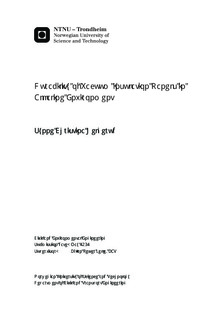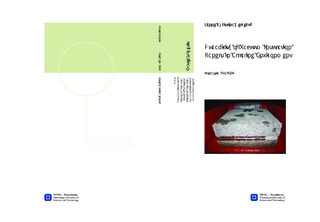| dc.contributor.advisor | Jelle, Bjørn Petter | nb_NO |
| dc.contributor.author | Helgerud, Synne Christina | nb_NO |
| dc.date.accessioned | 2014-12-19T11:28:22Z | |
| dc.date.available | 2014-12-19T11:28:22Z | |
| dc.date.created | 2012-11-08 | nb_NO |
| dc.date.issued | 2012 | nb_NO |
| dc.identifier | 565880 | nb_NO |
| dc.identifier | ntnudaim:7737 | nb_NO |
| dc.identifier.uri | http://hdl.handle.net/11250/232028 | |
| dc.description.abstract | Concrete and lightweight concrete elements are today used in various building applications to a great extent all over the world. Replacing traditional thermal insulation like e.g. expanded polystyrene (EPS), extruded polystyrene (XPS) and polyurethane (PUR) by vacuum insulation panels (VIPs) is discussed in order to increase the thermal resistance without increasing the wall thickness. Compared to traditional concrete and lightweight concrete elements, slimmer elements may still achieve U-values low enough to fulfil passive house or zero energy requirements. Thus, sandwich elements with VIPs may be an alternative to the traditional solutions. However, there may be some problems related to the use of VIPs in such concrete elements. The alkaline environment in concrete may lead to reactions with the aluminium (Al) in the multi-layered laminate used as the VIP envelope, and destroy its barrier function. To investigate the influence of the alkaline environment on the durability of VIPs in general, and the VIP envelope in particular, various VIP and VIP envelope specimen experiments have been carried out. The VIPs were subjected to different alkaline solutions at different temperatures, with and without direct contact with the liquid alkaline solutions. A worst-case scenario was investigated when any additional protection of the VIPs was disregarded. The results from the VIP experiments showed various degrees of degradation effects. Depending on the temperature and the pH-value of the alkaline environment the VIPs were exposed to, physical and thermal changes were observed on some of the test specimens, while others were more or less unaffected by the exposure. In general, the temperature proved to be the hardest strain, when the VIPs in heating cabinet showed much greater signs of degradation than the VIPs at room temperature, more or less independent on the pH-value of the alkaline solution they were exposed to. Interesting results were also obtained from the VIP envelope specimen experiment, where the VIP envelope showed signs of degradation after only a short time in alkaline solution. | nb_NO |
| dc.language | eng | nb_NO |
| dc.publisher | Institutt for bygg, anlegg og transport | nb_NO |
| dc.subject | ntnudaim:7737 | no_NO |
| dc.subject | MTBYGG Bygg- og miljøteknikk | no_NO |
| dc.subject | Bygnings- og materialteknikk | no_NO |
| dc.title | Durability of Vacuum Insulation Panels in Alkaline Environment | nb_NO |
| dc.type | Master thesis | nb_NO |
| dc.source.pagenumber | 50 | nb_NO |
| dc.contributor.department | Norges teknisk-naturvitenskapelige universitet, Fakultet for ingeniørvitenskap og teknologi, Institutt for bygg, anlegg og transport | nb_NO |

